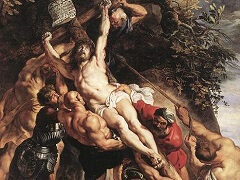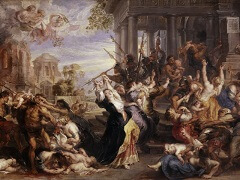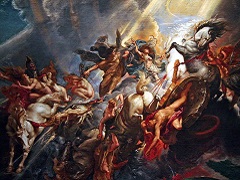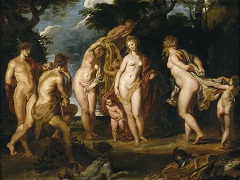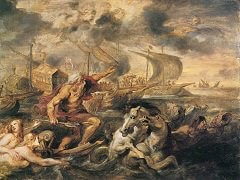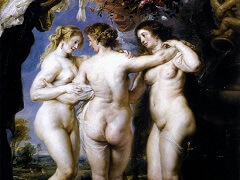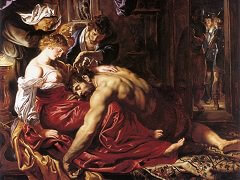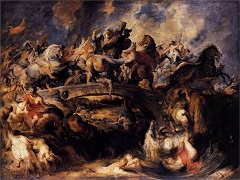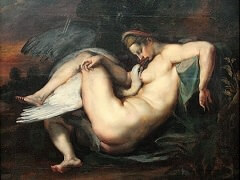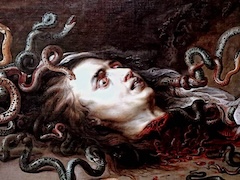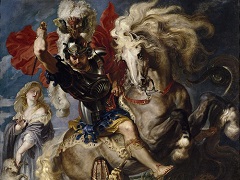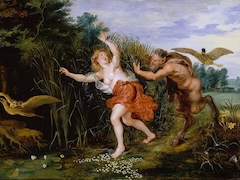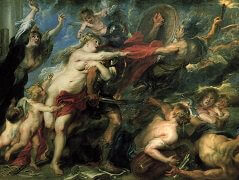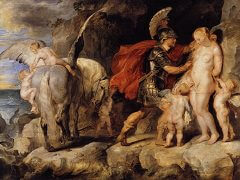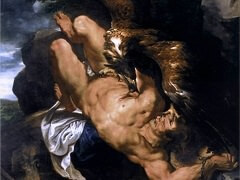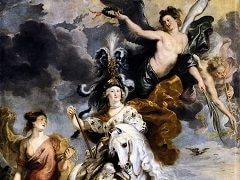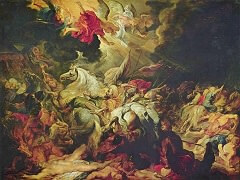The Rainbow Landscape, 1636 by Peter Paul Rubens
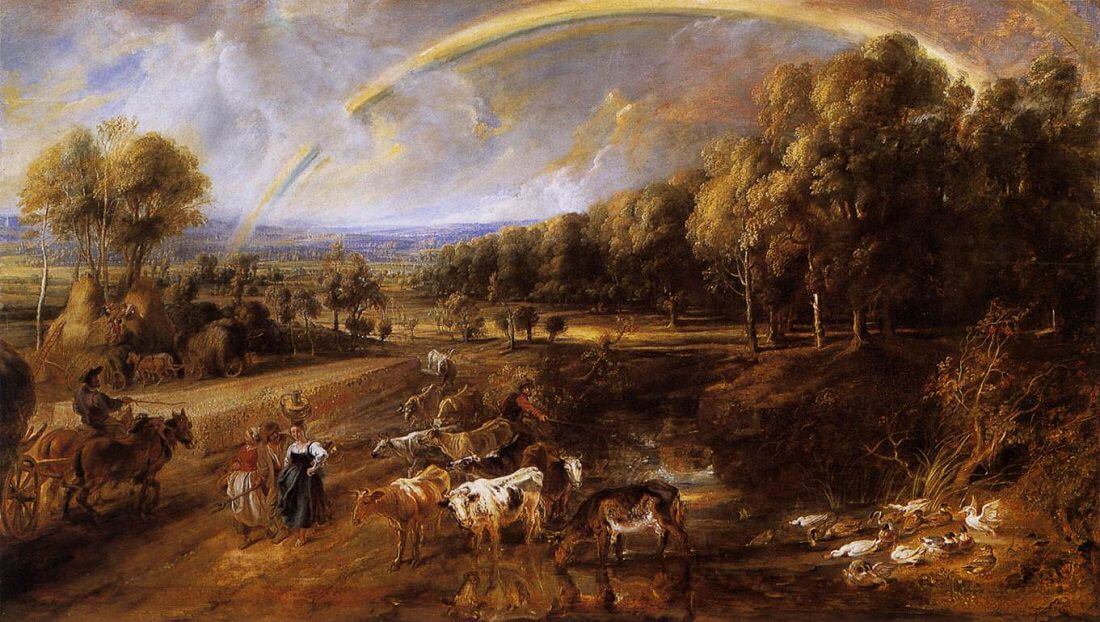
In 1635 the fifty-eight year old Rubens bought the chateau of Het Steen, situated between Brussels and Antwerp. Soon afterwards he painted The Rainbow Landscape.
The painting shows a late summer afternoon on Rubens's country estate. In the foreground cows are being driven home and ducks bathe in the stream. Peasants are gathering in the harvest and a milkmaid returns from her labours, carrying a shiny pitcher on her head. The activity takes place in front of a dark wood and a beautiful shimmering blue landscape dotted with houses and windmills.
The scene is crowned by a rainbow which extends from some way in the distance on the left and reaches towards us and behind the trees on the right. The beautiful yellow glow of the hay and the shining leaves of the sides of the trees are tempered by the darkness and shadows to the right, with the rainbow uniting the two sides. The rainbow is a reference to God's covenant after the flood.
The human and animal activity is concentrated into the foreground of the picture, giving the sense that people are drawing in and returning from the rural scene to their homes, soon to disappear along the road to the left and off the side of the painting.
Rubens created this work towards the end of his life and it is an imaginary artistic reconstruction of his own estate, called Het Steen, which he bought for himself and his young second wife, Helene Fourment. The estate, between Brussels and Antwerp, included a castle, draw-bridge, tower, moats, a lake and a farm and gave him the right to be known as Lord of Het Steen. It must have been an idyllic place for him to spend the last years of his life.

